Yoshu Chikanobu’s 19th-Century Nostalgia
His engravings, produced as Japan was opening up to the West, capture the final moments of a society closed off from the outside world.
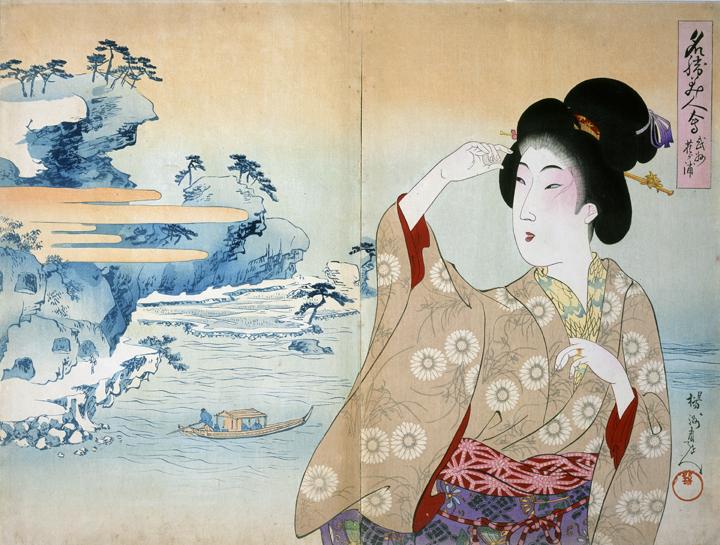
Yoshu Chikanobu - “Comparison of Famous Sites and Beautiful Women: Suzumegaura, Musashi Province, undated” (c. 1897-1898)
When the 122nd Emperor of Japan ascended to the throne, Yoshu Chikanobu was 30 years of age. His career as an artist was therefore put on hold by the Boshin War and he was captured after the Battle of Hakodate. Despite having been trained in martial arts in his youth, it was his artistic talents that led to him being quickly released, as his reputation accelerated the proceedings. In 2006, author Bruce Coats looked back at Yoshu Chikanobu’s fascinating body of work and its context in the book Chikanobu: Modernity and Nostalgia in Japanese Prints.
Yoshu Chikanobu’s artistic exploits began with him receiving training in painting at the Kano School. He then went on to study engraving alongside Keisai Eisen and Utagawa Kuniyoshi, before joining Utagawa Kunisada I’s studio. As Bruce Coats explains, the artist, born in 1838, started out working in the Kunisada style, before straying from it. ‘Over time Chikanobu’s women become taller, thinner and more graceful in their gestures, establishing a new canon of beauty for the mid-Meiji period that reflected a revival of interest in prints of a hundred years earlier.‘
Culture and combat
Yoshu Chikanobu’s work is marked by its relationship with time, and his sense of nostalgia for a bygone era, one during which he saw the country open up to the West. His woodblock prints, which also take the form of diptychs and triptychs, are dedicated to traditional subjects and portraits, and address aspects of Japanese culture that were dying out at the time. They present samurai and a number of heroic female figures, looking back to the past. This sense of nostalgia is particularly illustrated in the series Chiyoda Inner Palace (1895-1897), which depicts women’s existence inside Edo Castle prior to the Meiji restoration in 1868, when the palace housed the shogun and his court before they were driven out. In Chiyoda Outer Palace: Sanno Festival (1897), the artist focuses on the float procession, banners, musicians, and groups dressed in special costumes heading to the Hie-jinja shrine at Edo Castle.
Some of Yoshu Chikanobu’s work is centred on historical themes, such as the Satsuma Rebellion (1877) and the Sino-Japanese War (1894-1895). Bruce A. Coats’ book is the first monograph about the artist to be written in English and illustrates a key period in Japanese history that triggered the westernisation of the country and the consequences of this on the lifestyles of the residents.
Chikanobu: Modernity and Nostalgia in Japanese Prints (2006), a book by Bruce A. Coats, is published by Hotei Publishing.
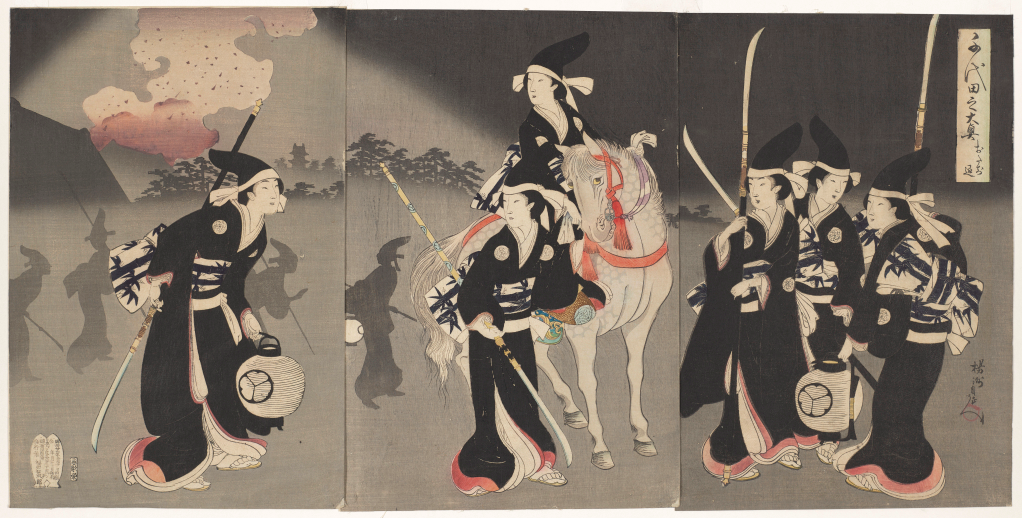
Yoshu Chikanobu - 'Chiyoda Inner Palace: Evacuation' (1895-1897)
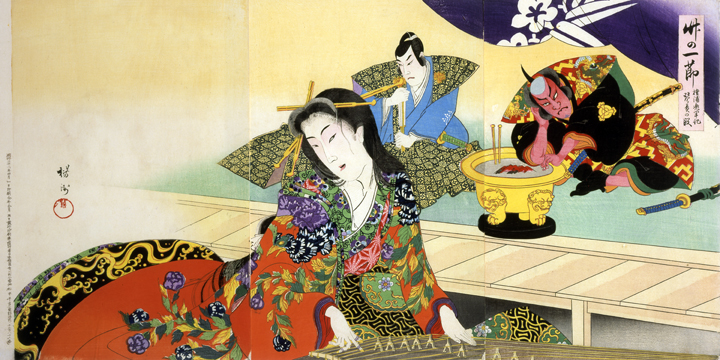
Yoshu Chikanobu - 'Chronicle of the Dan-no-ura Helmet, Koto Torture Scene', 1898
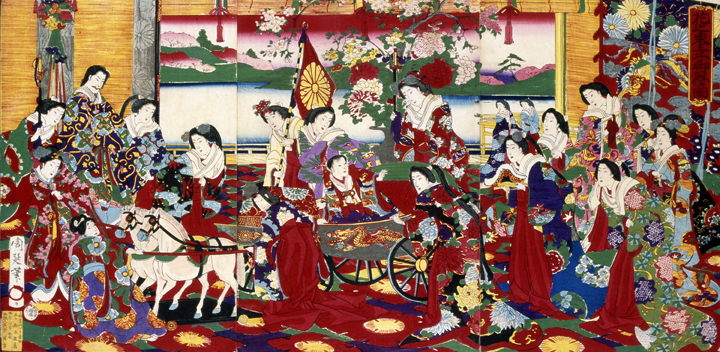
Yoshu Chikanobu - 'Consolation Picture of Prince Hana no Azuma', 1878
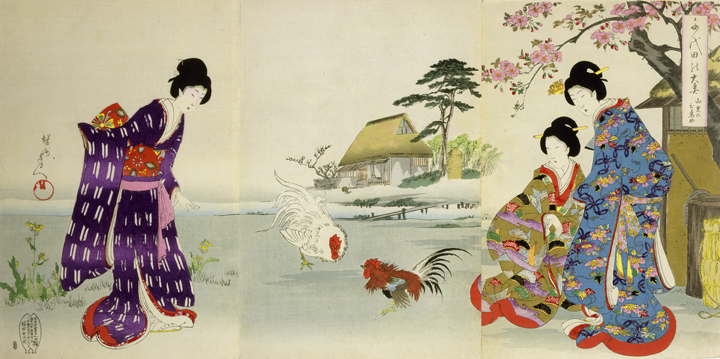
Yoshu Chikanobu - 'Chiyoda Inner Palace: No. 14 Mountain Village Teahouse', 1896
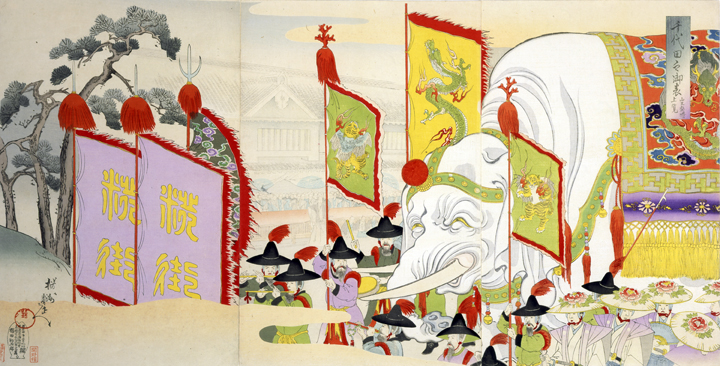
Yoshu Chikanobu - 'Chiyoda Outer Palace: Sanno Festival', 1897
TRENDING
-
A Rare Japanese Garden Hidden Within Honen-in Temple in Kyoto
Visible only twice a year, ‘Empty River’, designed by landscape architect Marc Peter Keane, evokes the carbon cycle.

-
Modernology, Kon Wajiro's Science of Everyday Observation
Makeup, beard shape, organisation of cupboards and meeting places: all of these details decipher 1920s Tokyoites.

-
Colour Photos of Yakuza Tattoos from the Meiji Period
19th-century photographs have captured the usually hidden tattoos that covered the bodies of the members of Japanese organised crime gangs.

-
Recipe for Ichiraku Ramen from ‘Naruto’ by Danielle Baghernejad
Taken from the popular manga with the character of the same name who loves ramen, this dish is named after the hero's favourite restaurant.

-
Hitachi Park Offers a Colourful, Floral Breath of Air All Year Round
Only two hours from Tokyo, this park with thousands of flowers is worth visiting several times a year to appreciate all its different types.





